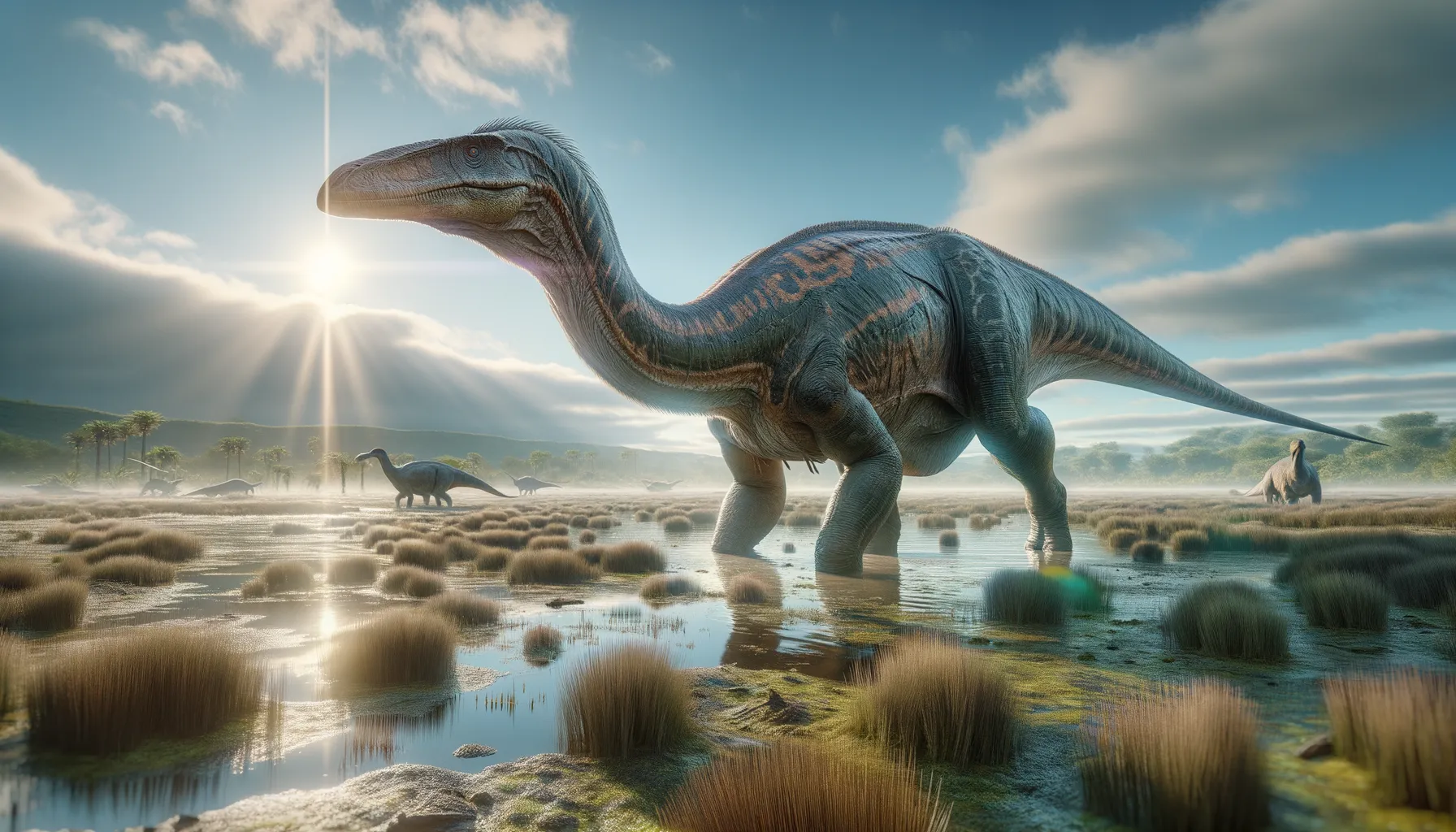
Magnapaulia
Graceful giant of the prehistoric marshlands.
Period
Cretaceous
Length
Estimated at 50 to 54 feet long.
Height
Around 30 feet tall at the hips.
Weight
Approximately 25 to 27 tons.
Magnapaulia was a massive hadrosaurid dinosaur known for its impressive size and recognizable duck-billed appearance. As one of the largest members of its family, it roamed the prehistoric plains and marshlands of what is now North America during the late Cretaceous period. Its fossilized remains provide insight into the life and environment of these unique herbivorous dinosaurs that thrived millions of years ago.
Diet
Magnapaulia was herbivorous, primarily feeding on the lush plant life abundant in its environment. It grazed on ferns, conifers, and other prehistoric vegetation using its specialized, flat teeth to grind plant material efficiently.
Hunting
As a herbivore, Magnapaulia didn't hunt but likely foraged in groups for safety. It used its height advantage to reach higher vegetation that smaller herbivores couldn't access.
Environmental challenges
Magnapaulia faced environmental challenges like seasonal food shortages, and competition from other herbivores. Predators such as theropods posed a constant threat. Furthermore, the changing landscapes and climate shifts of the late Cretaceous period required adaptability in finding food and shelter.
Speed
Magnapaulia moved at moderate speeds, suitable for evading predators.
Lifespan
Estimated to live around 20-30 years.
First discovery
Discovered in Baja California, Mexico in the early 1980s.
Fun Facts
- Magnapaulia is known for possibly being one of the largest duck-billed dinosaurs, reaching lengths of up to 52 feet.
- Its name comes from a combination of Latin and English, meaning 'great Paul', in honor of a rancher who discovered its remains.
- Magnapaulia lived during the Late Cretaceous period, around 73 million years ago, in what is now Baja California, Mexico.
- This dinosaur had a distinctive crest on its head, which may have been used for communication or display.
- Unlike some other duck-billed dinosaurs, Magnapaulia is believed to have been more of a hadrosaur, primarily a land-dweller.
- Its teeth were adapted for grinding plants, suggesting that it had a diet of tough, fibrous vegetation.
- Fossils of Magnapaulia have provided important insights into the diversity of dinosaur life in North America during the Cretaceous period.
Growth and Development
From hatchlings, Magnapaulia grew rapidly to reach their enormous adult size, thanks to a nutrient-rich diet. They likely had growth spurts in their early years and reached maturity relatively quickly to evade predators. Their development involved transitioning from vulnerable juveniles to large adults well-equipped for survival.
Habitat
Magnapaulia thrived in marshy and coastal environments that provided ample food and water resources. These habitats offered the dense vegetation needed to support their large diets. Seasonal flooding and shifts in water levels were common, influencing their movement and interactions within the ecosystem.
Interaction with other species
Magnapaulia likely shared its habitat with various other herbivorous and carnivorous dinosaurs. It possibly lived in herds, which provided safety in numbers from predators. It may have also interacted with smaller creatures that shared its environment, playing a role in shaping its ecosystem's dynamics.
Natural lifespan
In favorable conditions, they lived up to 30 years.
Reproduction
Magnapaulia likely reproduced by laying eggs in nests, similar to other hadrosaurs. These nests were possibly built in secluded or well-protected areas to shield eggs and juveniles from predators. Parental care might have included guarding the nest and assisting hatchlings in their early stages of life.
Social behaviour
Magnapaulia is believed to have been a social animal, likely living in groups that provided mutual protection against predators. This social structure might also have facilitated better foraging efficiency and helped in caring for young. Vocalizations and physical displays could have been part of their communication repertoire.
Fossil locations
Fossils of Magnapaulia have been primarily found in Baja California, Mexico. These discoveries have helped paleontologists understand its size, social patterns, and ecological role. Ongoing research in these areas continues to provide insights into its life and times.
